By Tushna Commissariat
I am rather tired as I type up this post, but I do have an excellent excuse for being so sleepy today as I was awake until the wee hours of the morning watching the “super blood Moon” eclipse. As most of you know, today’s eclipse was particularly impressive as a super Moon (when the Moon is at its closest point to the Earth) coincided with a total lunar eclipse – when the Earth is perfectly in-between the Sun and Moon.
Rather unusually for the UK, we (in and around Bristol, at least) had a crystal-clear night, devoid of any clouds. I set up camp in my backyard, armed with a pair of binoculars, my camera with a zoom lens (but, unfortunately, no tripod) and a hot cup of tea…or two!
Despite the cold bite of an autumn night, the Moon really was a sight to behold. Before the eclipse, the super Moon was so bright that I could hardly look at it through my binoculars.
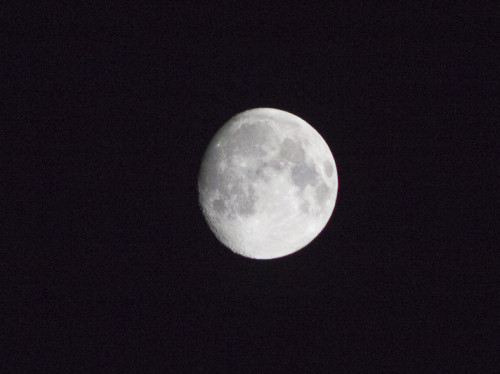
The full “super Moon” at around 10 p.m. BST, a few hours before the eclipse began. (Courtesy: Graeme Watt)
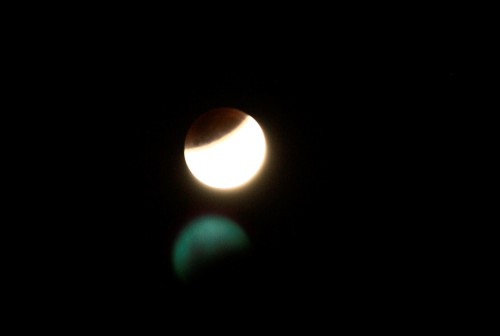
The Moon partially eclipsed, not quite bloody just yet, with a lunar flare. (Courtesy: Tushna Commissariat)
The lunar surface’s features became easier to see once part of the Moon was obscured by the Earth’s umbral shadow. The Moon’s hue slowly changed from snowy-white to a dark amber brew as the shadow advanced.
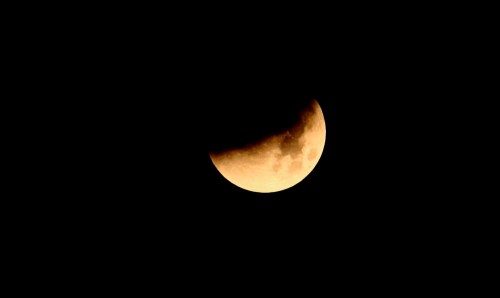
The Earth’s umbral shadow has swallowed half the Moon, which is taking on a copper hue. (Courtesy: Tushna Commissariat)
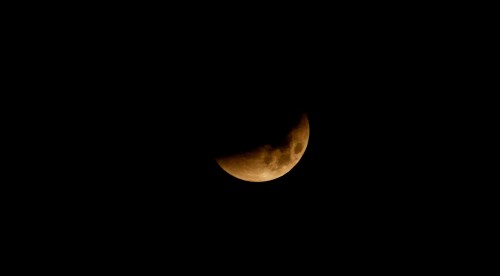
The crescent harvest Moon, with its valleys clearly seen. (Courtesy: Tushna Commissariat)
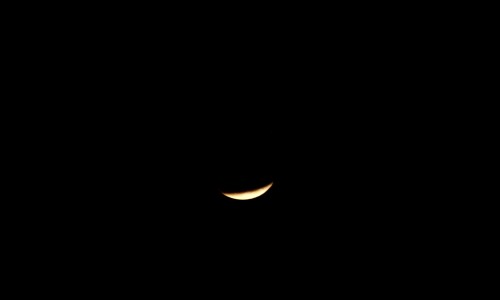
The lunar diamond ring…minutes before totality. (Courtesy: Tushna Commissariat)
Totality was just after 3 a.m., and the bold blood Moon glowed in the suddenly very starry sky. Indeed, the constellation of Pisces, which at this time of year lurks just behind the Moon and is therefore not visible on bright moonlight nights, suddenly came into view – you can see it in some of the images below. That is one of my favourite things about any eclipse: the hidden stars that come to “light” when the Sun is blotted out.
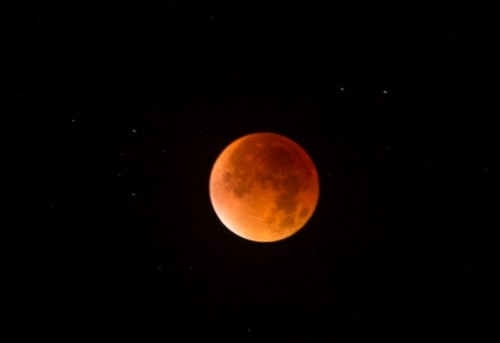
Totality for the lunar eclipse, and the blood Moon (and stars) appear. (Courtesy: Graeme Watt)
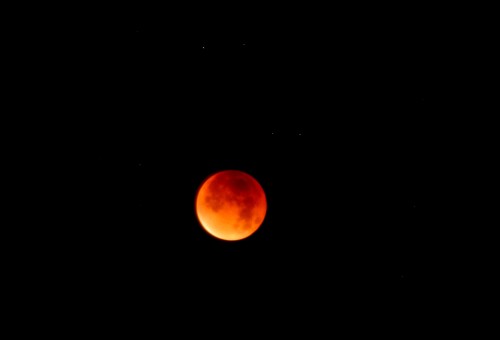
The blood Moon. Notice the stars, part of the Pisces constellation, shining above. (Courtesy: John Gill)
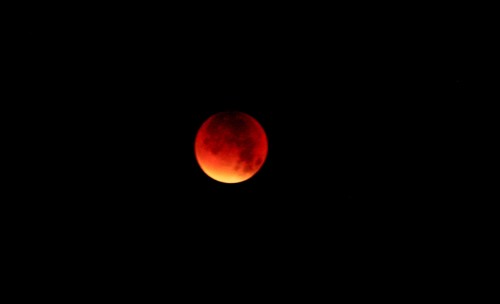
The bloodiest of blood Moons, an awesome and eerie sight. (Courtesy: Tushna Commissariat)
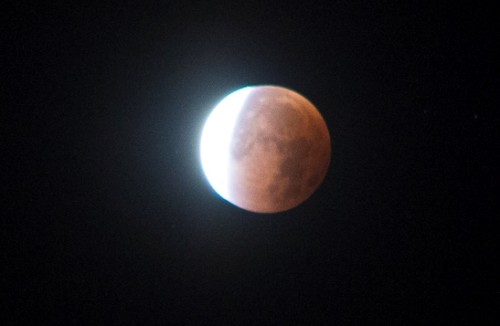
Post totality and the light of the super Moon begins to shine once more. (Courtesy: Graeme Watt)
I did not stay up until 6 a.m. for the eclipse to end (I did need some sleep to be able to make it to work today!), but I did get to see the end thanks to the image above, taken by a colleague. For those of you who managed to watch this rare sight, send in your pictures and stories. For those of you who did not – thanks to geographical reasons, clouds or sleep – I hope you enjoy these images. And be sure to mark the next super Moon eclipse – happening in 2033 – in your diaries.
Thanks for the pictures I didn’t get the chance to see it myself! And thanks for the great article too!
Thanks for the report and pictures. The first image surely deserves some comment, otherwise the Moon’s shape wouldn’t fit the description (full=round). It seems to show a refraction-distorted Moon very close to the horizon (which should be to the left). So perhaps it would be better posted by rotating 90 degrees to the left to show the actual view of the photographer.
Trackback: Blood Moon at night, stargazers’ delight – MyPhysNet